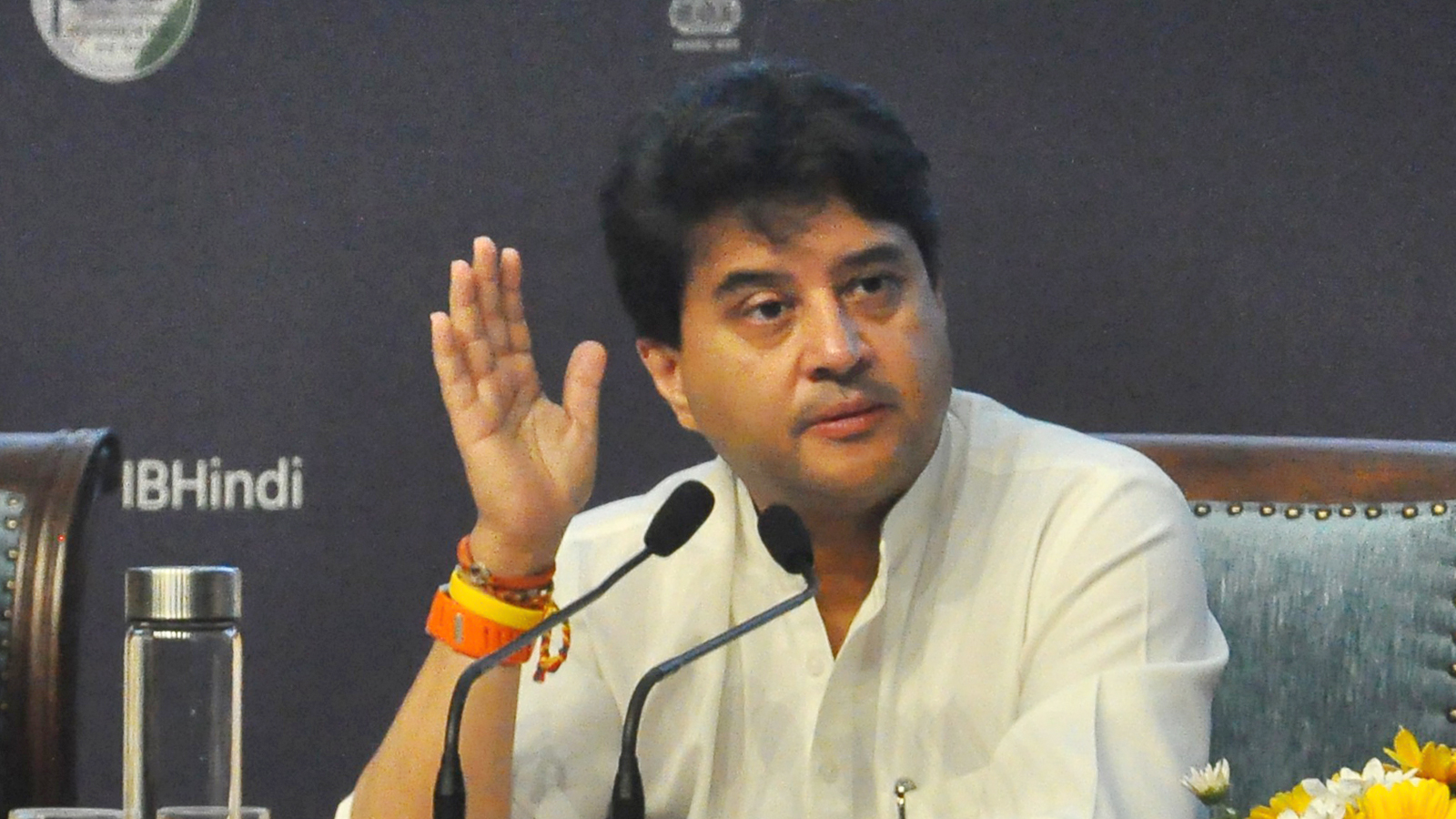Union Minister for Communications and Development of North Eastern Region Jyotiraditya M. Scindia on Friday said that India has moved from being a follower to becoming a global leader in the telecom sector. Addressing a press conference in New Delhi, he highlighted the sector’s rapid expansion, technological breakthroughs, and strengthened digital security under the leadership of Prime Minister Narendra Modi.
The event also saw the participation of Minister of State for Communications Chandra Sekhar Pemmasani, Secretary (Posts) Vandita Kaul and Secretary (Telecom) Neeraj Mittal.
“India has now become a leader in telecom, both in terms of services and in terms of products,” Scindia said, noting the exponential rise in internet users and the expansion of the optical fibre cable network. “If you were to classify India as a digital nation, it would be the third largest in the world.”
Scindia termed the financial turnaround of Bharat Sanchar Nigam Limited (BSNL) as one of the most remarkable achievements of the ministry. After 18 years, the state-run telecom company turned profitable at the operational level, reporting ₹262 crore profit in Q3 and ₹280 crore in Q4 of FY2024–25. BSNL’s EBITDA surged to ₹5,395 crore, while losses dropped from ₹5,400 crore to ₹2,400 crore.
India also joined the elite group of nations developing their own end-to-end telecom technology through the successful deployment of an indigenous 4G stack.
Under the government’s “100% telecom saturation” mission, 75% of the target has been achieved within a year. Out of 17,000 towers planned under the 4G Saturation Project, nearly 13,000 have already been installed.
Connectivity has expanded rapidly in underserved regions as well. The aspirational district scheme reached 81% saturation. Left-Wing Extremism-affected areas grew from 0% to 57% coverage in Phase I and from 74% to 87% in Phase II. Island territories improved from 38% to 84% coverage.
Highlighting telecom security, Scindia said that AI-based tools such as ASTR have disconnected over 82 lakh fraudulent mobile connections. The Financial Fraud Risk Indicator system has prevented scams worth nearly ₹200 crore.
Global partners, including Google, have joined India’s fraud prevention efforts. A unified Digital Intelligence Platform now enables data sharing among over 750 government and private entities, including banks, state governments, and law enforcement agencies.
Telecom regulations have been strengthened with the Telecom Regulatory Authority of India (TRAI) introducing monthly reporting of service quality, replacing the earlier quarterly system. By April 2026, telecom operators will be required to keep call drop rates below 2% and latency under 50 milliseconds.
Infrastructure development has been expedited through a single-window clearance portal, reducing right-of-way approval timelines from 448 days in 2019 to just 33 days in 2025.
Scindia highlighted internal reforms at BSNL, where every Chief General Manager now functions as the CEO of their circle, setting and reviewing quarterly targets. A marathon “9-to-9” review meeting was recently held to assess performance and share best practices.
Secretary (Telecom) Neeraj Mittal credited the achievements to PM Modi’s visionary leadership, saying the department has worked with the spirit of inclusion, speed, security and development to ensure that “no citizen, no village, and no enterprise is left behind.”
Scindia concluded, “Digital Bharat continues to inspire the world as a model of inclusive growth, with secure, self-reliant, and innovative telecom at its backbone. India’s telecom story is one of transformation, resilience, and leadership.”










